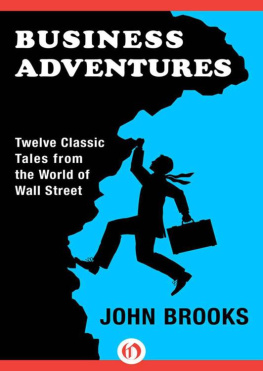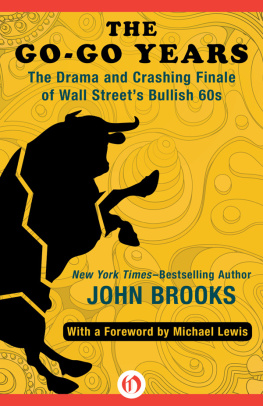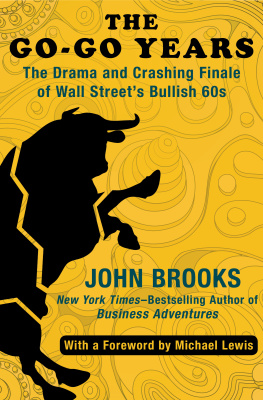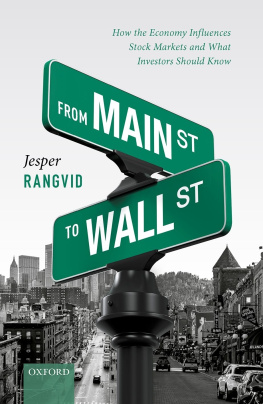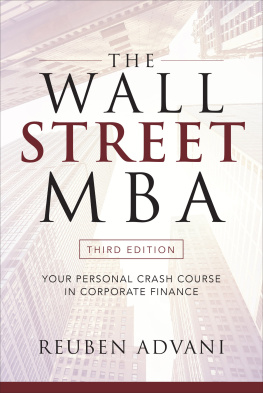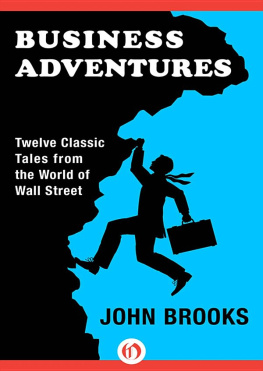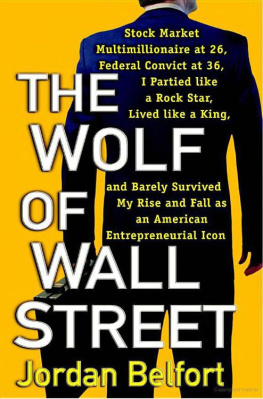Business Adventures
Twelve Classic Tales from the World of Wall Street
John Brooks

Contents
The Fluctuation
THE STOCK MARKET the daytime adventure serial of the well-to-dowould not be the stock market if it did not have its ups and downs. Any board-room sitter with a taste for Wall Street lore has heard of the retort that J. P. Morgan the Elder is supposed to have made to a nave acquaintance who had ventured to ask the great man what the market was going to do. It will fluctuate, replied Morgan dryly. And it has many other distinctive characteristics. Apart from the economic advantages and disadvantages of stock exchangesthe advantage that they provide a free flow of capital to finance industrial expansion, for instance, and the disadvantage that they provide an all too convenient way for the unlucky, the imprudent, and the gullible to lose their moneytheir development has created a whole pattern of social behavior, complete with customs, language, and predictable responses to given events. What is truly extraordinary is the speed with which this pattern emerged full blown following the establishment, in 1611, of the worlds first important stock exchangea roofless courtyard in Amsterdamand the degree to which it persists (with variations, it is true) on the New York Stock Exchange in the nineteen-sixties. Present-day stock trading in the United Statesa bewilderingly vast enterprise, involving millions of miles of private telegraph wires, computers that can read and copy the Manhattan Telephone Directory in three minutes, and over twenty million stockholder participantswould seem to be a far cry from a handful of seventeenth-century Dutchmen haggling in the rain. But the field marks are much the same. The first stock exchange was, inadvertently, a laboratory in which new human reactions were revealed. By the same token, the New York Stock Exchange is also a sociological test tube, forever contributing to the human species self-understanding.
The behavior of the pioneering Dutch stock traders is ably documented in a book entitled Confusion of Confusions, written by a plunger on the Amsterdam market named Joseph de la Vega; originally published in 1688, it was reprinted in English translation a few years ago by the Harvard Business School. As for the behavior of present-day American investors and brokerswhose traits, like those of all stock traders, are exaggerated in times of crisisit may be clearly revealed through a consideration of their activities during the last week of May, 1962, a time when the stock market fluctuated in a startling way. On Monday, May 28th, the Dow-Jones average of thirty leading industrial stocks, which has been computed every trading day since 1897, dropped 34.95 points, or more than it had dropped on any other day except October 28, 1929, when the loss was 38.33 points. The volume of trading on May 28th was 9,350,000 sharesthe seventh-largest one-day turnover in Stock Exchange history. On Tuesday, May 29th, after an alarming morning when most stocks sank far below their Monday-afternoon closing prices, the market suddenly changed direction, charged upward with astonishing vigor, and finished the day with a large, though not record-breaking, Dow-Jones gain of 27.03 points. Tuesdays record, or near record, was in trading volume; the 14,750,000 shares that changed hands added up to the greatest one-day total ever except for October 29, 1929, when trading ran just over sixteen million shares. (Later in the sixties, ten, twelve, and even fourteen-million share days became commonplace; the 1929 volume record was finally broken on April 1st, 1968, and fresh records were set again and again in the next few months.) Then, on Thursday, May 31st, after a Wednesday holiday in observance of Memorial Day, the cycle was completed; on a volume of 10,710,000 shares, the fifth-greatest in history, the Dow-Jones average gained 9.40 points, leaving it slightly above the level where it had been before all the excitement began.
The crisis ran its course in three days, but, needless to say, the post-mortems took longer. One of de la Vegas observations about the Amsterdam traders was that they were very clever in inventing reasons for a sudden rise or fall in stock prices, and the Wall Street pundits certainly needed all the cleverness they could muster to explain why, in the middle of an excellent business year, the market had suddenly taken its second-worst nose dive ever up to that moment. Beyond these explanationsamong which President Kennedys April crackdown on the steel industrys planned price increase ranked highit was inevitable that the postmortems should often compare May, 1962, with October, 1929. The figures for price movement and trading volume alone would have forced the parallel, even if the worst panic days of the two monthsthe twenty-eighth and the twenty-ninthhad not mysteriously and, to some people, ominously coincided. But it was generally conceded that the contrasts were more persuasive than the similarities. Between 1929 and 1962, regulation of trading practices and limitations on the amount of credit extended to customers for the purchase of stock had made it difficult, if not actually impossible, for a man to lose all his money on the Exchange. In short, de la Vegas epithet for the Amsterdam stock exchange in the sixteen-eightieshe called it this gambling hell, although he obviously loved ithad become considerably less applicable to the New York exchange in the thirty-three years between the two crashes.
THE 1962 crash did not come without warning, even though few observers read the warnings correctly. Shortly after the beginning of the year, stocks had begun falling at a pretty consistent rate, and the pace had accelerated to the point where the previous business weekthat of May 21st through May 25thhad been the worst on the Stock Exchange since June, 1950. On the morning of Monday, May 28th, then, brokers and dealers had reason to be in a thoughtful mood. Had the bottom been reached, or was it still ahead? Opinion appears, in retrospect, to have been divided. The Dow-Jones news service, which sends its subscribers spot financial news by teleprinter, reflected a certain apprehensiveness between the time it started its transmissions, at nine oclock, and the opening of the Stock Exchange, at ten. During this hour, the broad tape (as the Dow-Jones service, which is printed on vertically running paper six and a quarter inches wide, is often called, to distinguish it from the Stock Exchange price tape, which is printed horizontally and is only three-quarters of an inch high) commented that many securities dealers had been busy over the weekend sending out demands for additional collateral to credit customers whose stock assets were shrinking in value; remarked that the type of precipitate liquidation seen during the previous week has been a stranger to Wall Street for years; and went on to give several items of encouraging business news, such as the fact that Westinghouse had just received a new Navy contract. In the stock market, however, as de la Vega points out, the news [as such] is often of little value; in the short run, the mood of the investors is what counts.
This mood became manifest within a matter of minutes after the Stock Exchange opened. At 10:11, the broad tape reported that stocks at the opening were mixed and only moderately active. This was reassuring information, because mixed meant that some were up and some were down, and also because a falling market is universally regarded as far less threatening when the amount of activity in it is moderate rather than great. But the comfort was short-lived, for by 10:30 the Stock Exchange tape, which records the price and the share volume of every transaction made on the floor, not only was consistently recording lower prices but, running at its maximum speed of five hundred characters per minute, was six minutes late. The lateness of the tape meant that the machine was simply unable to keep abreast of what was going on, so fast were trades being made. Normally, when a transaction is completed on the floor of the Exchange, at 11 Wall Street, an Exchange employee writes the details on a slip of paper and sends it by pneumatic tube to a room on the fifth floor of the building, where one of a staff of girls types it into the ticker machine for transmission. A lapse of two or three minutes between a floor transaction and its appearance on the tape is normal, therefore, and is not considered by the Stock Exchange to be lateness; that word, in the language of the Exchange, is used only to describe any additional lapse between the time a sales slip arrives on the fifth floor and the time the hard-pressed ticker is able to accommodate it. (The terms used on the Exchange are not carefully chosen, complained de la Vega.) Tape delays of a few minutes occur fairly often on busy trading days, but since 1930, when the type of ticker in use in 1962 was installed, big delays had been extremely rare. On October 24, 1929, when the tape fell two hundred and forty-six minutes behind, it was being printed at the rate of two hundred and eighty-five characters a minute; before May, 1962, the greatest delay that had ever occurred on the new machine was thirty-four minutes.
Next page
